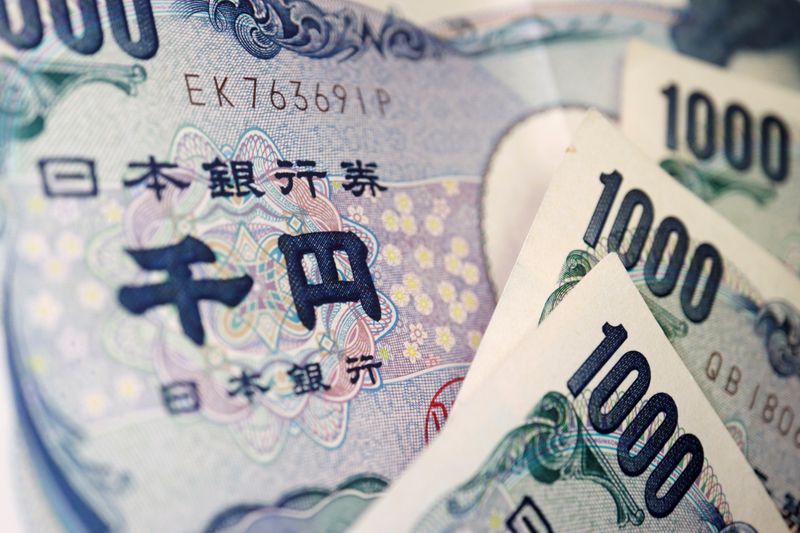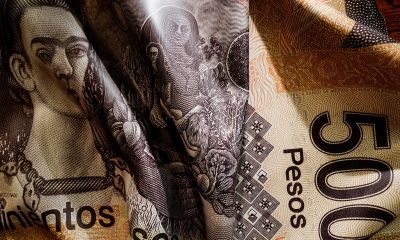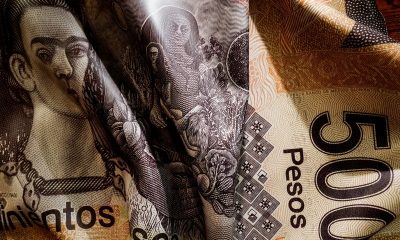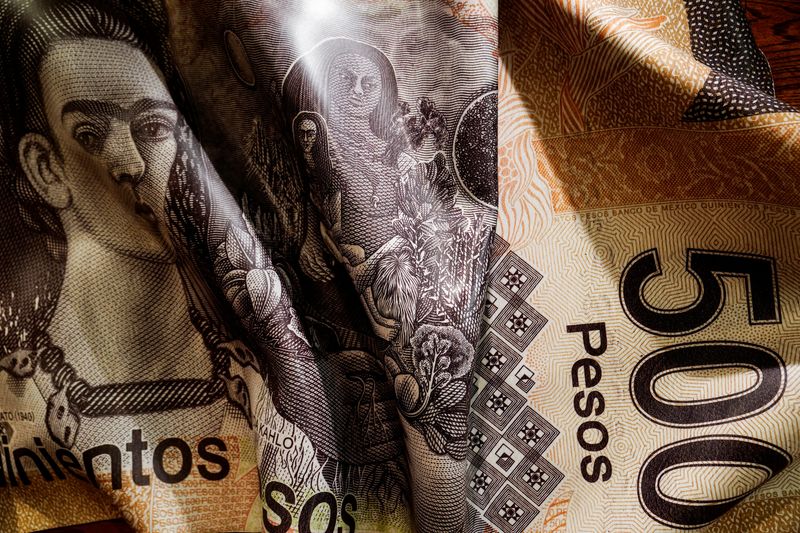Forex
Dollar rises on safe-haven bid, big UK inflation drop hits pound


© Reuters. Banknotes of Japanese yen are seen in this illustration picture taken June 15, 2022. REUTERS/Florence Lo/Illustration/file photo
By Saqib Iqbal Ahmed
NEW YORK (Reuters) -The dollar rose against a basket of currencies on Wednesday as a late-session selloff on Wall Street boosted the U.S. currency’s safe-haven appeal, and as data on sharply falling UK inflation prompted a steep drop in the British pound.
U.S. stocks closed lower on Wednesday after an abrupt mid-afternoon sell-off snapped a rally which had been driven by falling interest rates and the Federal Reserve’s dovish turn.
The dollar was last up 0.28% at 102.42, on pace to break a two-day losing streak. The index had dropped about 1.5% for the week ended Tuesday after last week’s Federal Reserve meeting prompted traders to pencil in several rate cuts in 2024, starting as early as March.
U.S. Federal Reserve officials have since been pushing back on the idea of rapid rate cuts next year.
Helen Given, FX Trader at Monex USA, said Wednesday’s rebound for the dollar was driven in part by a safety bid for the greenback as well as doubts about the Fed actually cutting rates as swiftly as the market is pricing.
“We don’t necessarily believe that the Fed is going to cut as early as market thinks … so we think this reaction is pretty well merited,” Given said.
Data on Wednesday showed U.S. consumer confidence increased more than expected in December amid optimism about the labor market, which could help to underpin the economy early next year.
The Federal Reserve’s dovish December pivot has boosted the case for the weakening dollar to keep falling into 2024, though strength in the U.S. economy could limit the greenback’s decline, according to investors.
Investors now await U.S. inflation data on Friday for clues to future Fed policy actions.
Meanwhile, the pound was down 0.76% at $1.2633, after slipping to a near 1-week low of $1.2625.
British inflation fell in November to its lowest rate in over two years, prompting investors to fully price in a BoE rate cut by May 2024 and assign a nearly 50% chance of a cut by March.
“A number of banks have seen pricing for (interest rate) cuts being front loaded. I think Bank of England was just a little bit behind because the inflation is higher, but it’s now starting to move in the same direction,” said Vassili Serebriakov, foreign exchange and macro strategist at UBS.
“Also, the pound has had a good run in the past couple of weeks, I think it’s just reversing some of those moves,” Serebriakov said.
Meanwhile, European Central Bank policymaker Joachim Nagel said in an interview published on Wednesday that euro zone interest rates must remain high and traders betting on upcoming cuts in borrowing costs should be careful. The euro was 0.36% lower at $1.0941.
The dollar fell 0.14% against the yen to 143.64, a day after the Bank of Japan maintained its ultra-loose monetary policy and opted to wait for more evidence to justify a shift.
“The last thing (the BOJ) wants to do is to have to undo (a rate hike) again in a couple of months’ time,” Rob Carnell, Asia-Pacific head of research at ING, said.
Japan’s government is aiming to reduce its budget next fiscal year for the first time in 12 years, Reuters reported on Wednesday.
In cryptocurrencies, bitcoin gained 3.26% to $43,634, its highest since Dec. 9. A spate of filings for spot bitcoin and ether ETFs, including from traditional finance heavyweights, has helped revive the crypto market this year after a series of meltdowns in 2022.

 Forex3 years ago
Forex3 years agoForex Today: the dollar is gaining strength amid gloomy sentiment at the start of the Fed’s week

 Forex3 years ago
Forex3 years agoUnbiased review of Pocket Option broker

 Forex3 years ago
Forex3 years agoDollar to pound sterling exchange rate today: Pound plummeted to its lowest since 1985

 Forex3 years ago
Forex3 years agoHow is the Australian dollar doing today?

 Cryptocurrency3 years ago
Cryptocurrency3 years agoWhat happened in the crypto market – current events today

 World3 years ago
World3 years agoWhy are modern video games an art form?

 Commodities3 years ago
Commodities3 years agoCopper continues to fall in price on expectations of lower demand in China

 Economy3 years ago
Economy3 years agoCrude oil tankers double in price due to EU anti-Russian sanctions


























